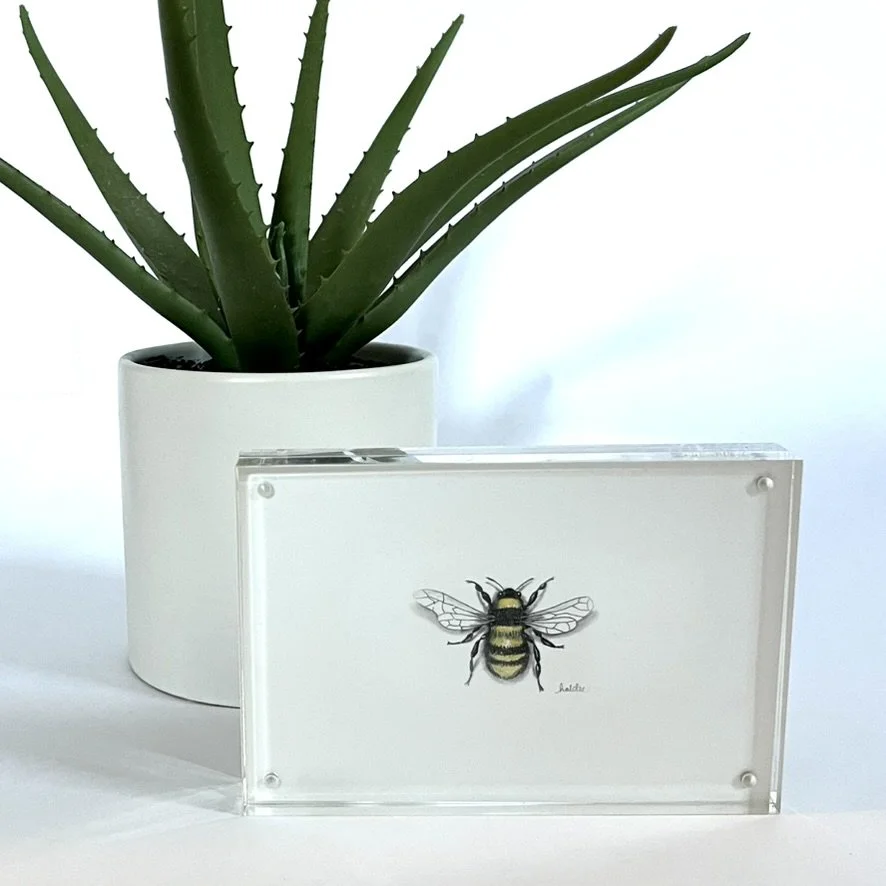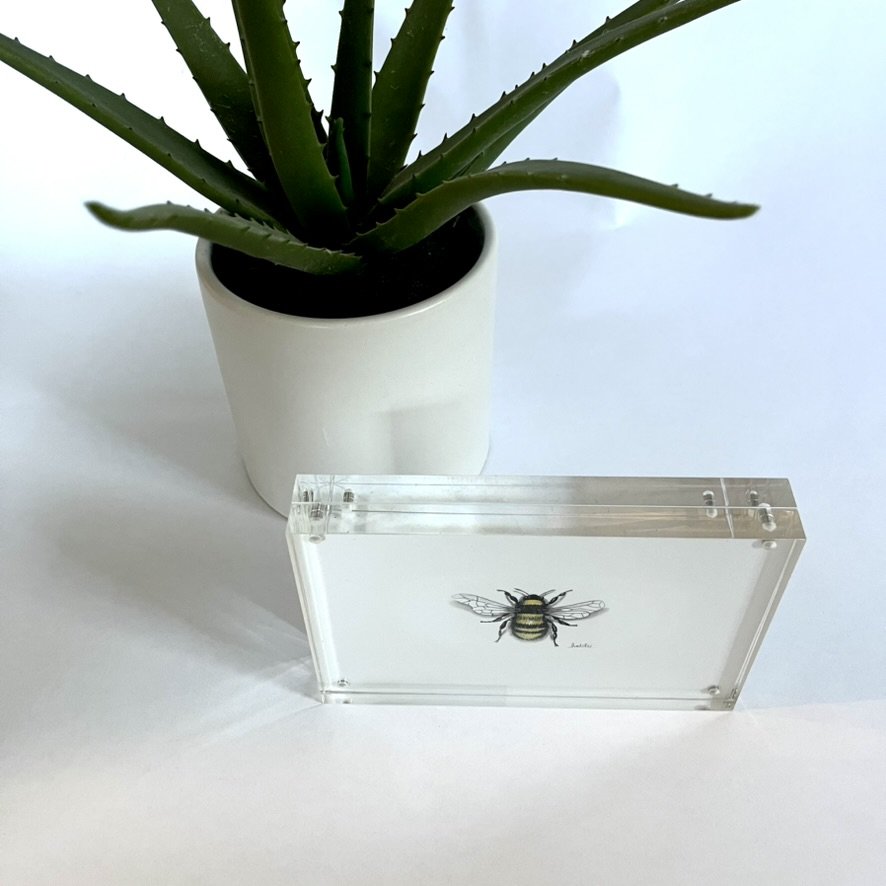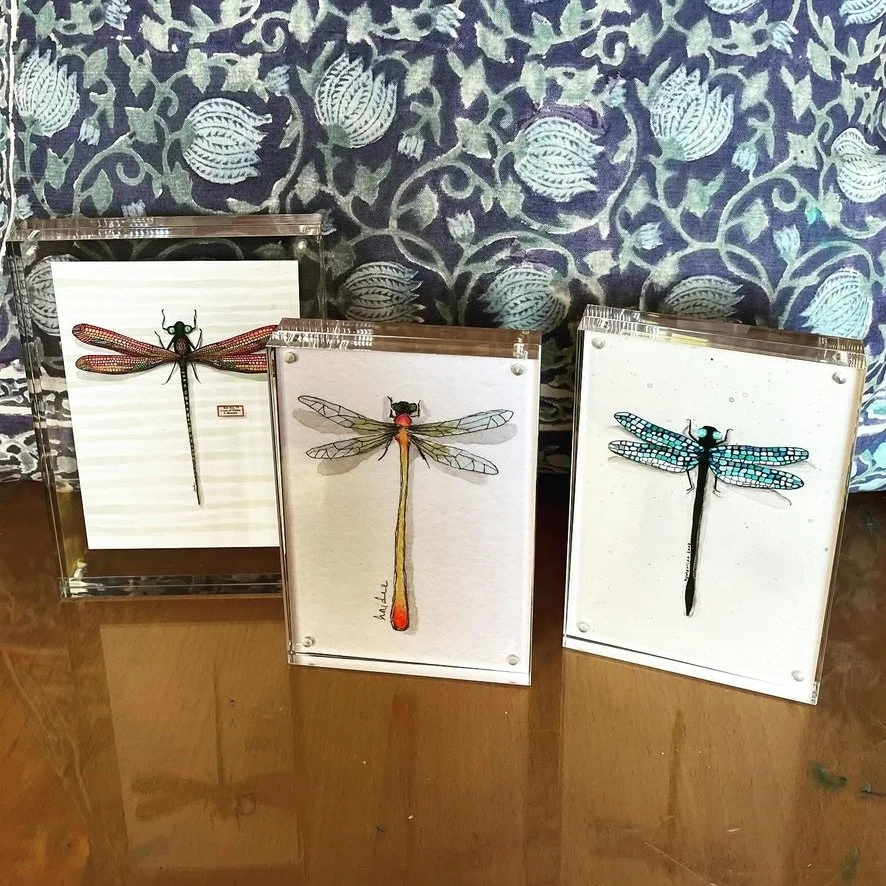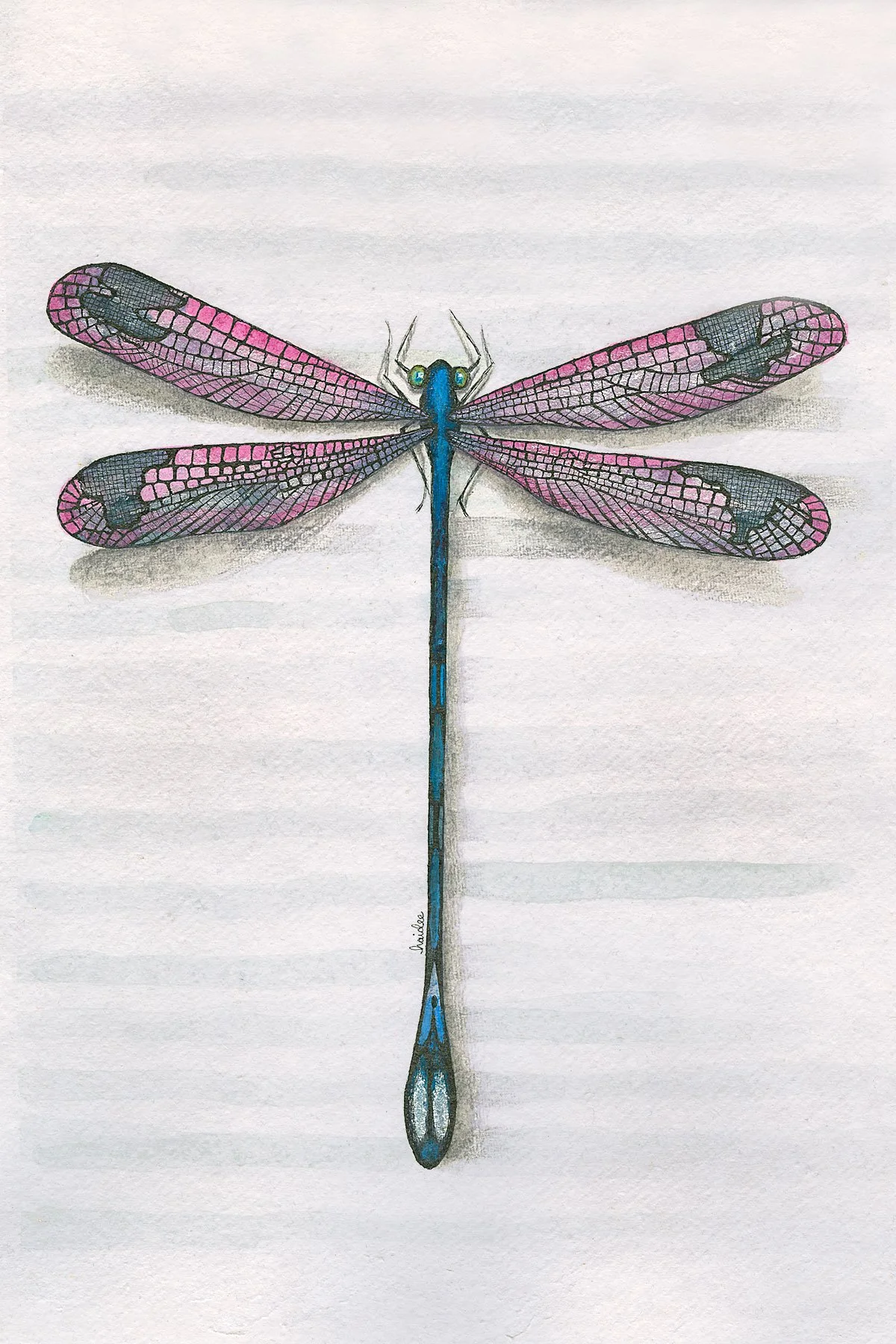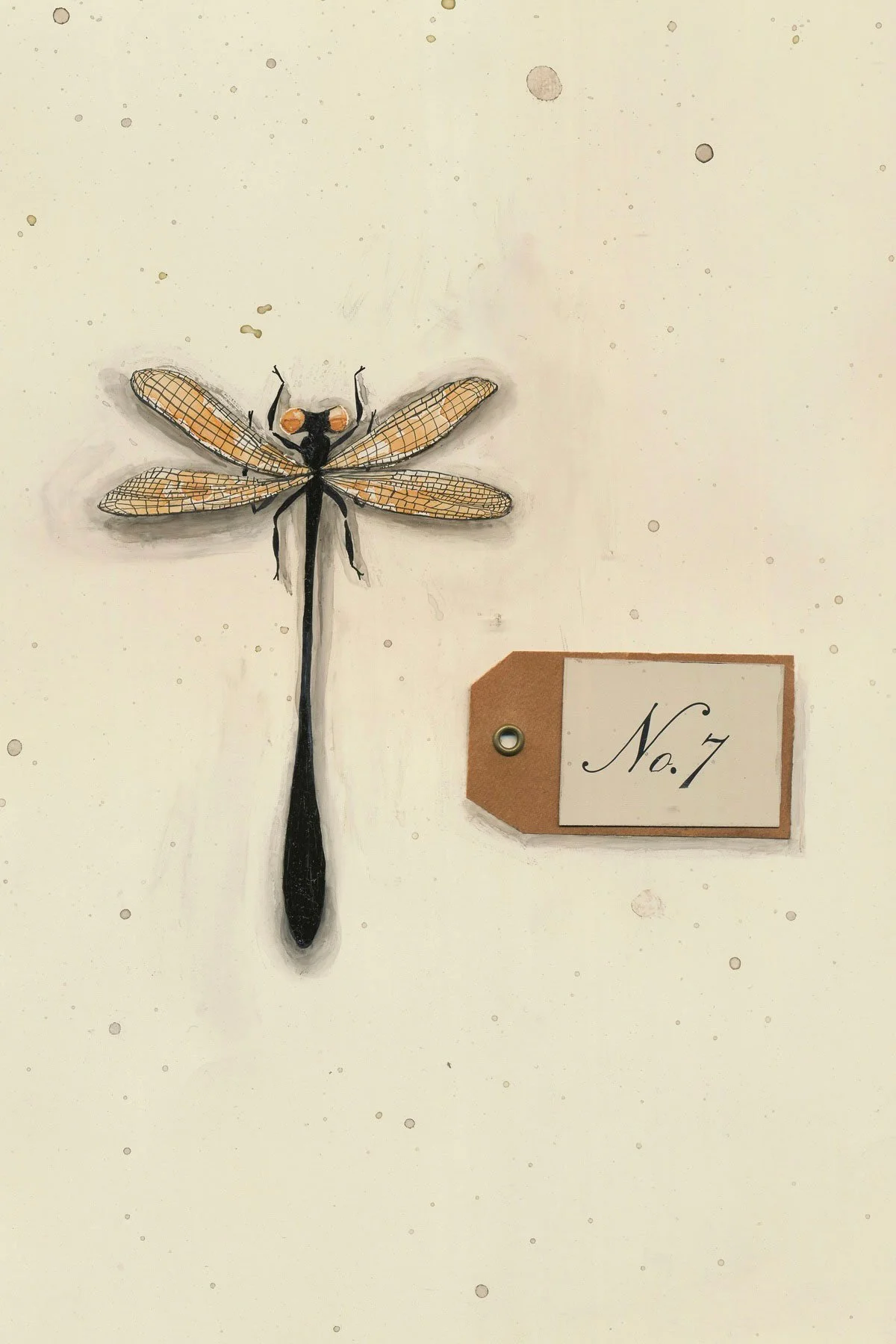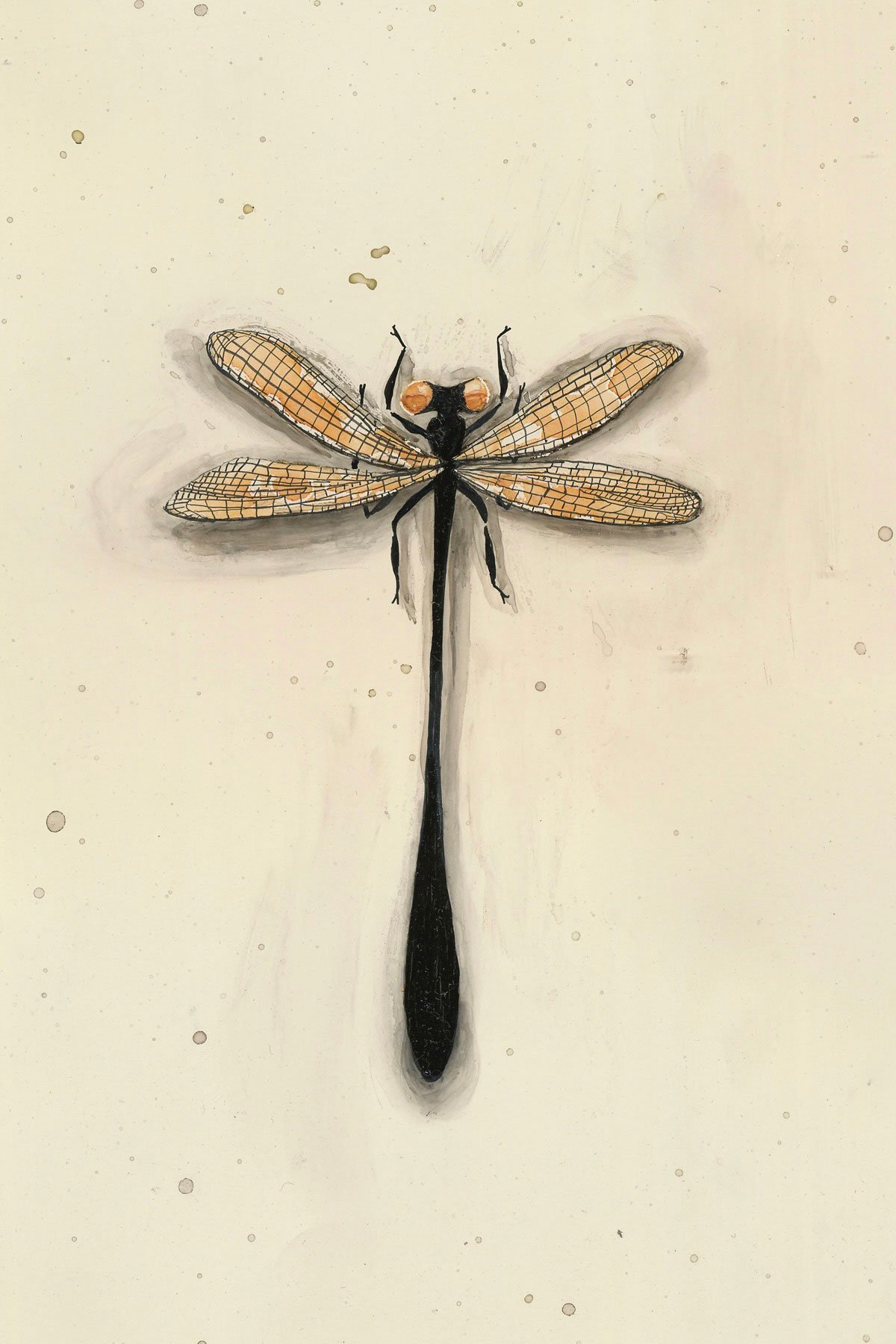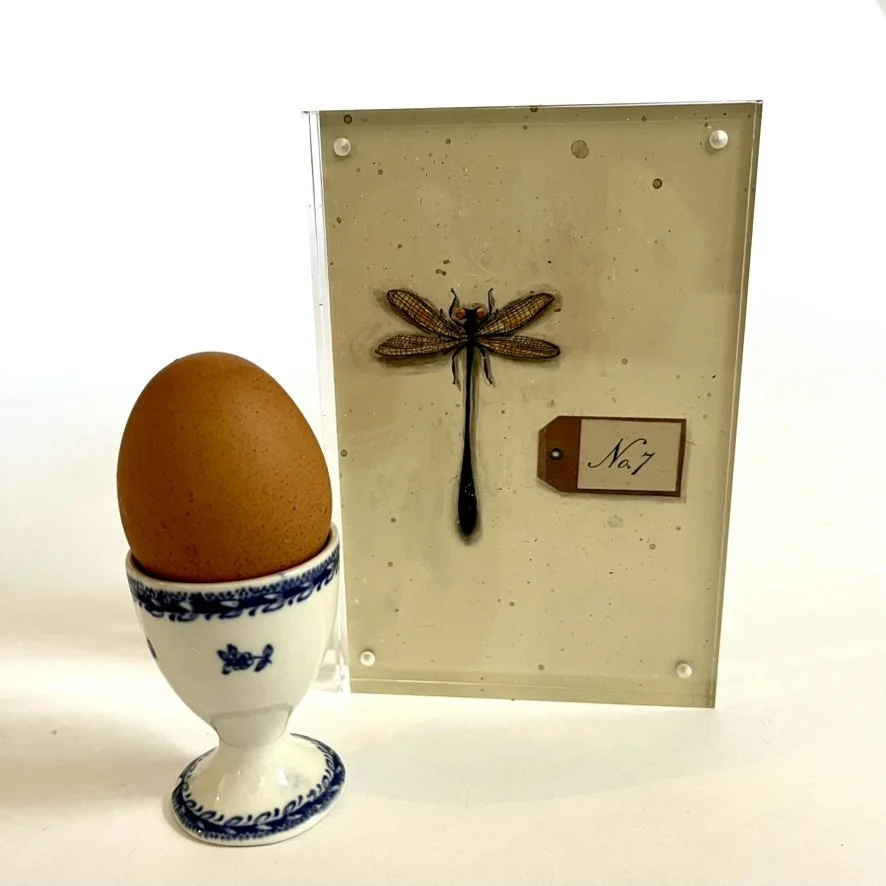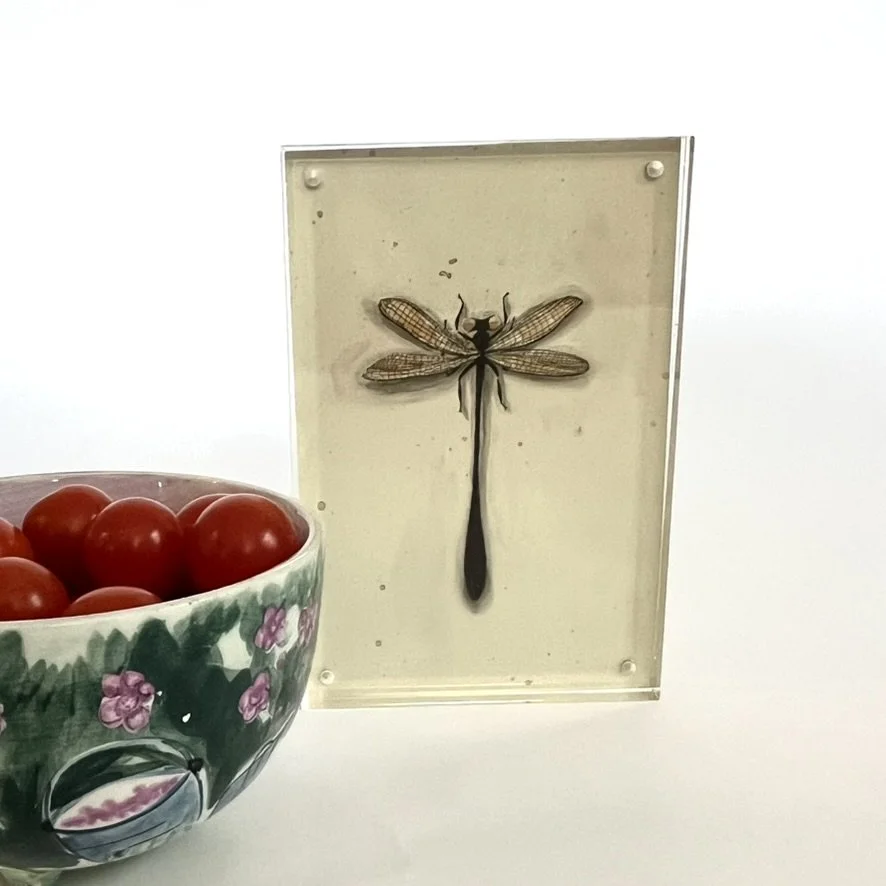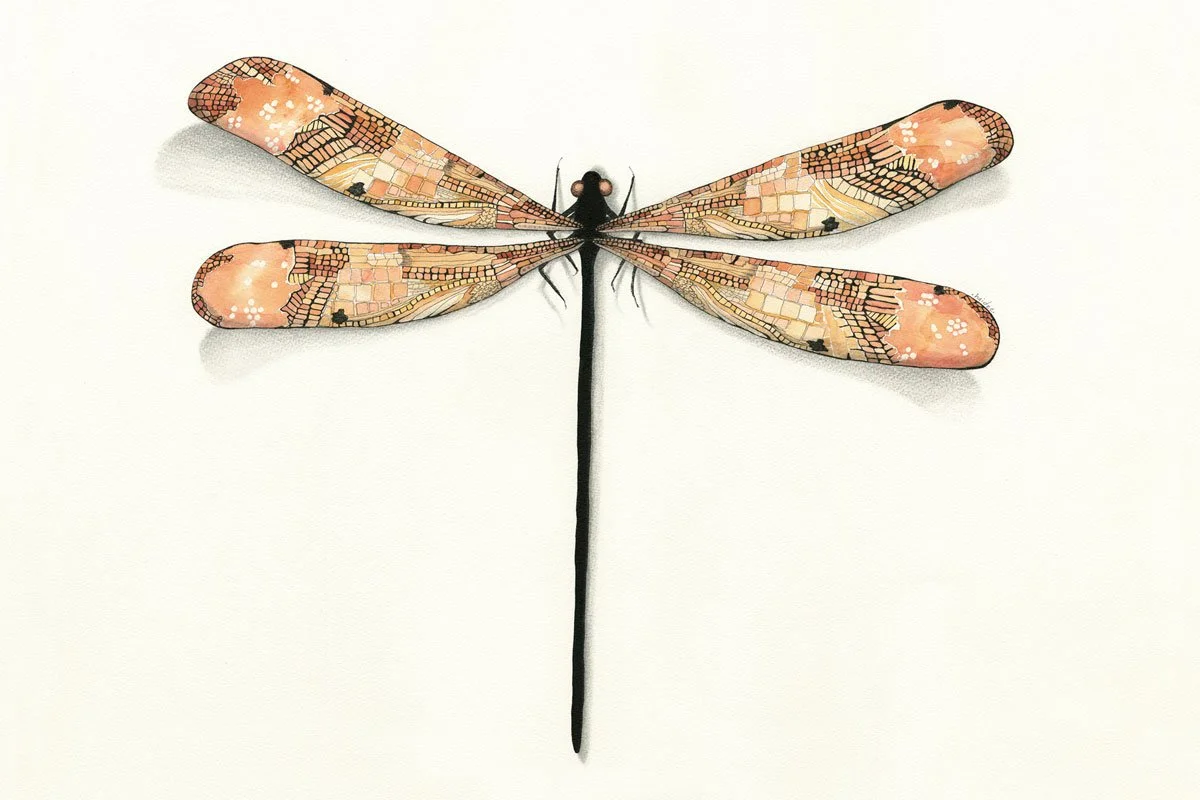Collected in the wildflower margins of the Beresford Arboretum, South Warwickshire, in late May of 1887 by the amateur botanist and apiarist Eugenia Lyle, this rare golden-backed bumblebee is notable not only for the luminous saffron fuzz, but also for its unusually methodical foraging habits—recorded by Lyle in a series of soft pencil field sketches, now lost save for this single colored plate.
Named Bombus florentis aureatus for the golden hue it acquires from consistent contact with blooming primroses (Primula veris) and woodland celandine, this species was once believed to follow specific bloom cycles, returning each year to the same ancestral path through mossy oak corridors and bramble-flanked brooks. Its thorax, dark as velvet soil, is ringed with fine ochreous bands; its wings—nearly translucent—carry the faintest blush of violet, visible only when backlit by morning light.
It was Miss Lyle who first noted that individuals of this species pause mid-air with a peculiar stillness, as if listening for some harmonic frequency beneath the hum of the forest. She proposed, in a now-out-of-print volume, that B. florentis aureatus might be partially heliotropic—guided by light as much as scent.
Though unconfirmed by formal entomological societies, this theory has persisted in certain rural circles, where this bee is known as “the sun’s courier.” Only a handful of specimens were ever cataloged, and fewer still preserved in a condition as fine as this.
Set here in crystal-clear acrylic, Specimen No. 41 is both artifact and apparition—an echo of golden air and hidden thickets, a trace of scientific romance lost to time.
Note: High quality archival glicée print on acid-free paper, a method that creates fine art reproductions with exceptional color accuracy and longevity. Pigments-based inks are designed to resist fading and discoloration and capture the finest details and subtle color variations with great precision.
Housed in a 4×6” crystal-clear acrylic specimen block, its 1” depth allows freestanding display. Each piece is designed to exhibit on desk or shelf.
Fly Design uses a practice known as entonology — the study of fictitious insects — to reimagine the natural world through scientific storytelling and poetic design.


